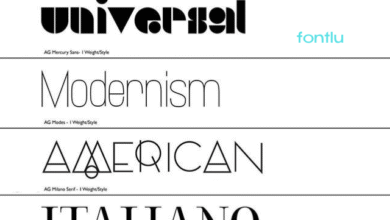Sodziu: A Comprehensive Guide to Meaning, Usage, and Cultural Context

Language constitutes a dynamic phenomenon, perpetually changing and influenced by its users. One such term that has garnered attention in linguistic and cultural circles is sodziu. Although it may seem obscure at first, sodziu encapsulates a rich blend of emotional and cultural undertones as well as colloquial usage. This article examines the meaning of sodziu, its use cases, and its relevance for learners of the language, translators, and cultural enthusiasts.
This article aims to enhance your understanding and appreciation of sodziu, whether you are a linguist, an avid traveller, or a language lover always on the lookout for gems.
Table of contents
What is sodziu?
The word sodziu, or sodžiu in its diacritical version, is often associated with informal verbal communication as an expression of affirmation or interjection. Roughly translating to “you know,” “so,” or “I mean,” its meaning depends on the context of usage.
Etymology and Origin
- Language of origin: Lithuanian or Regional Slavic Influence
- Literal meaning: Informal speech patterns utilised when bridging ideas
- Cultural context: Slang of conversational Lithuanian or informal speech used in surrounding regions
Common Translations
- “In other words”
- “That is to say”
- “You know what I mean”
How is Sodziu Used in Daily Speech?
Conversational Sodziu Filler
In informal dialogue, sodziu serves as a conversational filler like how “like”, “so”, or “you know” fills speech for English natives.
Example:
Sodziu, we tried everything, but nothing worked.
Clarification Emphasis
Sodziu can also be employed to underscore a conclusion or to emphasise a statement.
Example:
We went to three stores. Sodziu, it was exhausting!
Emotional Tone
Sodzic expresses, depending on intonation, fury and resignation or excitement.
Sodziu sociocultural Fluency Parameters
A certain degree of proficiency in the sociocultural dimension of fluency will signify your understanding of when it is appropriate to use sodziu.
Utilisation in Casual Contexts
- Having conversations with peers
- Narrating events
- Recalling experiences
- Demonstrating sentiments
Avoid Formal Contexts
- Relations and Correspondences
- Research Paper
- Conference or seminar talks
Sodziu in Cinema and the Internet
Sodziu has been adopted into memes, tweets, and even viral videos, especially among Baltic users, with the advent of digital technology.
Social Media Examples:
- “This day was wild. Sodziu, I can’t even.”
- “No context. Just vibes. Sodziu.”
These are trendy phrases to use and in this way, sodziu is becoming a socio-cultural marker of relatable discourse.
The Reasoning of Sodziu and Other Fillers
While many consider fillers to be empty, needless elements, critical functions have been attributed to them:
- Cognitive Pause: Organising thoughts
- Social signal: Shows alignment, agreement or shared feeling
- Stylistic device: Enlivens speech rhythm
Academic Comments:
In their study, Clark & Fox Tree (2002) argue that certain filler words may be beneficial to the listener by signposting the presentation of information; it is quite the opposite with sodziu, it doesn’t follow this pattern well.
Best Practices for Incorporating Sodziu into Speech and Writing
Have you been looking for ways to incorporate sodziu into speech or writing? Here is a guide for you to speak like a local:
1. Know the Tone
- Casual = Go ahead
- Formal = Avoid it
2. Don’t Overuse
- Balance is crucial with all fillers.
- Clarity of expression is sodziu’s aphorism.
3. Practice in Context
Immerse yourself in Baltic culture by watching YouTube videos or listening to their podcasts.
Related Terms and Variations
| Term | Meaning | Context |
| Nu | “Well” / hesitation | Similar to sodziu |
| Žinai | “You know” | Emphasizes agreement |
| Ta prasme | “Meaning / I mean” | Clarifies statement |
You can mix and match these terms and pragmatically like sodziu to enhance the authenticity of your conversation.
Case Study: Storytelling with Sodziu
Picture a friend explaining a rough day to you:
“We woke up late, missed the train, and it started raining. Sodziu, it was a disaster.”
Incorporating sodziu allows the speaker to emotionally summarise a complex experience strikingly.
Navigating SEO and Branding: Implications of Cultural Linguistic Nuance
For content creators, digital marketers, and bloggers, understanding cultural-linguistic nuances like sodziu can:
- Enhance audience relatability with Baltic speakers
- Sharpen brand tone and voice
- Optimize micro copy
Internal and External Resources
Internal Links:
- Understanding Slang in Translation
- Top 10 Linguistic Fillers Across Languages
External Authoritative Sources:
- Using Uh and Um in Spontaneous Speaking by Clark and Fox (2002)
- Lithuanian Language Institute – Link
- Reddit threads linguistics slang forum – Link
Conclusion
In the context of evolving language and culture, sodziu exemplifies more than just a speech filler—it captures essence, emotion, and identity. In informal vernacular, sodziu serves a greater role as an inflection, whether emphasising a point, transitioning between ideas, expressing humour, or even frustration. As we analysed, knowing when and how to employ sodziu enhances understanding of cultural and regional contexts.
For marketers, culture students, and learners, sodziu stands as an important illustration of how minute utterances possess dense meaning. It emphasises the notion that communication is beyond grammar—in essence, it summarises connection. While remaining true to its expressiveness, sodziu morphs from Lithuanian slang to modern social media.
If cultural insights capture your attention, integrating terms like sodziu enhances flavour while connecting people and perspectives.
Curiously exploring the intricacies of language reminds learners not to underestimate the power of utterances like sodziu that convey deeper narratives.
FAQS
1. What does “sodziu” mean and where does it originate from?
Sodziu, also spelled sodžiu, is an informal linguistic expression rooted in Lithuanian or regional Slavic speech. It functions as a conversational filler or interjection, loosely translating to “you know,” “I mean,” or “so,” depending on context.
2. When should I use sodziu in conversation?
Use sodziu in casual, spoken contexts—such as storytelling, social chats, or online dialogue—to emphasize a point or transition between ideas. Avoid it in formal situations like academic writing, business meetings, or professional correspondence.
3. Why is sodziu significant in linguistic and cultural studies?
Sodziu exemplifies how colloquial speech reveals deeper cultural meaning and emotion. It illustrates the role of filler words in human connection, making it valuable for language learners, translators, and digital communicators targeting Baltic-speaking audiences.





